10 Hindu temples In Indonesia You Must Visit In 2025
Indonesia, the world’s largest archipelagic state, is not just home to stunning beaches and lush jungles but also to a deep-rooted Hindu cultural heritage. While the country has a Muslim-majority population, islands like Bali and regions like Yogyakarta and Central Java still retain a magnificent Hindu legacy, preserved through ancient temples, rituals, and art.
In this blog, we explore the top 10 Hindu temples in Indonesia that every spiritual traveler, history enthusiast, or culture explorer must visit in 2025.
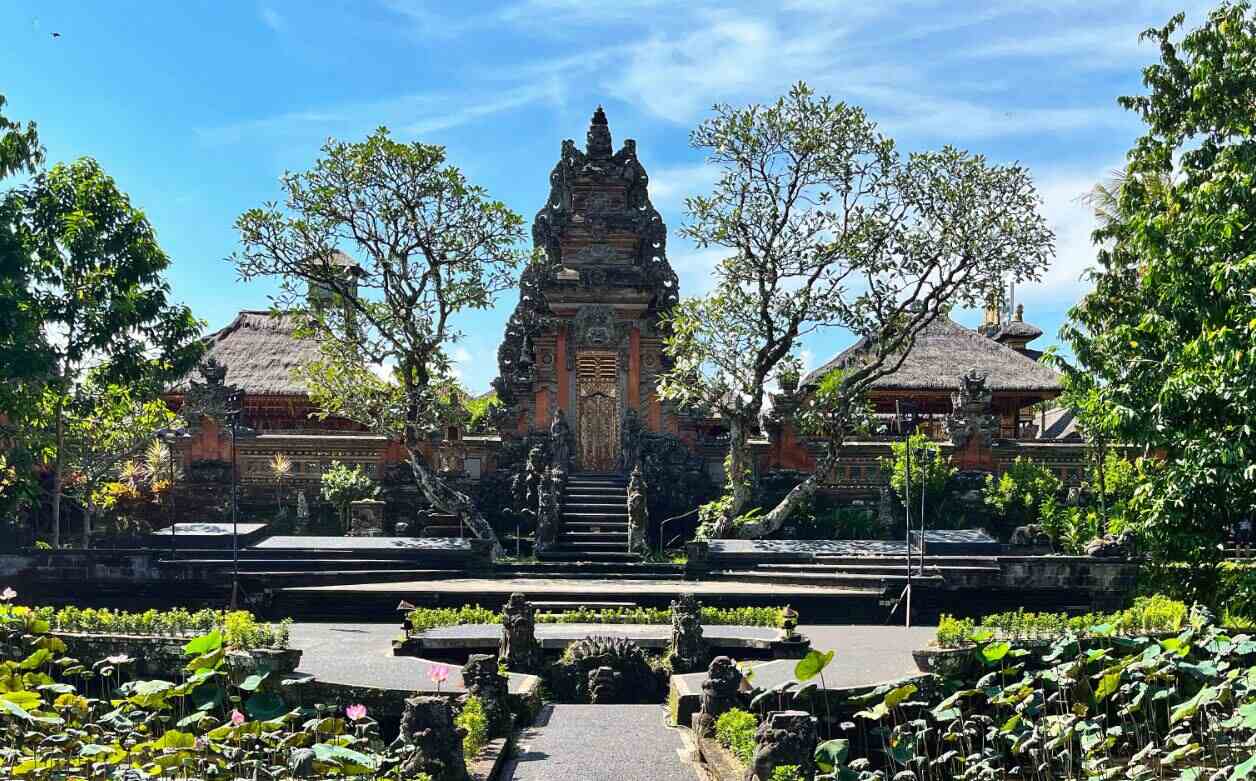
The Republic of Indonesia is rich in diverse natural and cultural heritage. Besides its rich natural heritage, Indonesia is well-known for its magnificent historical temples. These temples are not only remarkable for their architectural beauty but also for their historical and cultural significance.
The Hindu population in Indonesia is divided into three groups: Indians, Balinese, and Javanese. As a result, their temples and methods of worship differ from one another.
The Candi-style temple is based on the Vedic Vastu Shastra and has an open-air worship spot surrounded by walls with complexly designed gates. Another type, the Koil temple, follows the Tamil or Dravidian style and is typically found in South India.
Now that you know a little about different Hindu temples let’s look at some of Indonesia’s must-visit Hindu temples.
Contents
1. Besakih Temple – Bali’s Mother Temple
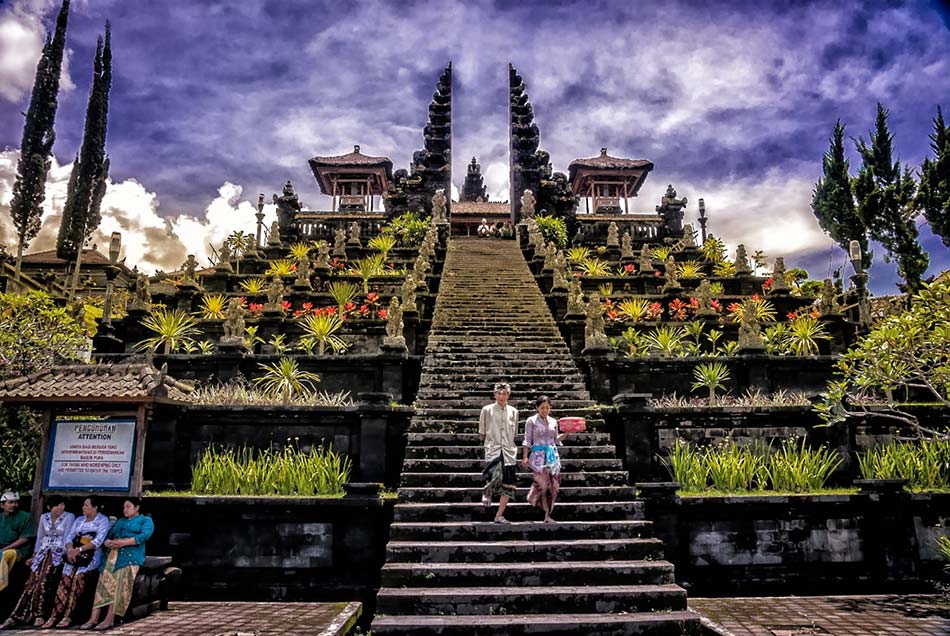
Location: Mount Agung, Besakih Village, Karangasem Regency, Bali
Also known as: Pura Besakih
Pura Besakih is considered the holiest and largest Hindu temple in Bali, often referred to as the “Mother Temple of Bali.” It sits majestically on the slopes of Mount Agung, Bali’s tallest volcano. Dating back over 2,000 years, this temple complex consists of 23 interrelated temples, with Pura Penataran Agung being the most prominent.
Main deities: Lord Shiva, Lord Vishnu, and Lord Brahma
Best time to visit: During one of the 70+ annual Balinese festivals
Why visit: Spiritual energy, panoramic mountain views, and ancient Balinese architecture
It is a Pura temple on the slope of Mt. Agung, Bali, Indonesia. It is the largest and the holiest Balinese Hindu temple that dates 2,000 years old and represents the Hindu Trinity gods (Lord Shiva, Lord Vishnu, and Lord Brahma).
Pura Besakih became the main temple for various Balinese dynasties for worship. The complex of Besakih has 23 temples that stand up parallel. Moreover, the main attraction of the temple is Pura Penataran Agung. It is a structure that mimics the Hindu sacred mountain, Meru – home to all Hindu gods.
Throughout the year, almost seventy festivals take place. So, visiting this holy site during the festival season adds extra adventure to tourists.
2. Goa Lawah Temple – The Sacred Bat Cave Temple
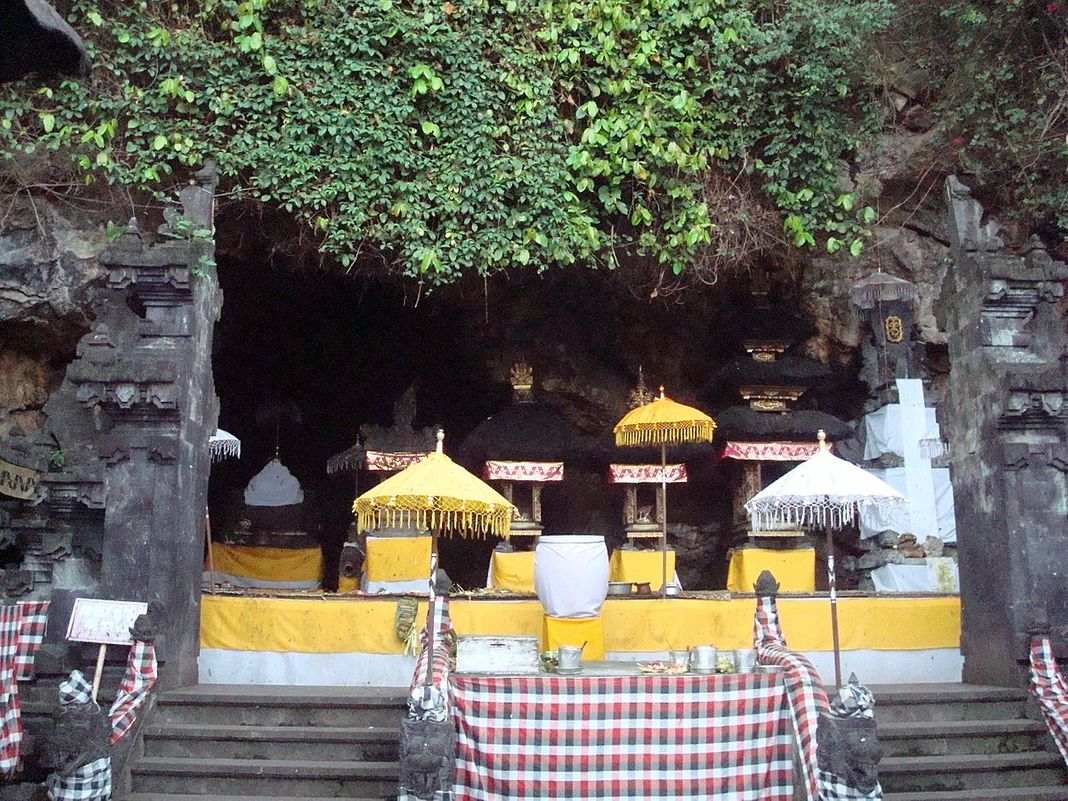
Location: Pesinggahan Village, Klungkung, Bali
Known as the Bat Cave Temple, Goa Lawah is one of Bali’s six most sacred temples or “Sad Kahyangan.” Built in the 11th century by Mpu Kuturan, the temple is famous for its natural cave filled with thousands of bats and a tranquil seaside setting.
Main deity: Lord Shiva
Why visit: Unique combination of natural wonders and divine ambiance
Tip: Visit early morning for a peaceful atmosphere
This 15-century Balinese Hindu temple is built over a hill around a bat cave in Pesinggahan village, Klungkung, Bali, Indonesia, by one of the earliest Hindu priests in Bali, Mpu Kuturan. The architectural design of the temple includes three chambers. The outer chamber or entrance of the cave has three pavilions.
On one of the pavilions, a musical performance takes place. The inner section consists of three Pelinggih Meru, one dedicated to the Hindu god Lord Shiva. As per locals, visiting a temple in the morning is the best as the temperature is cool.
3. Candi Prambanan – UNESCO World Heritage Temple
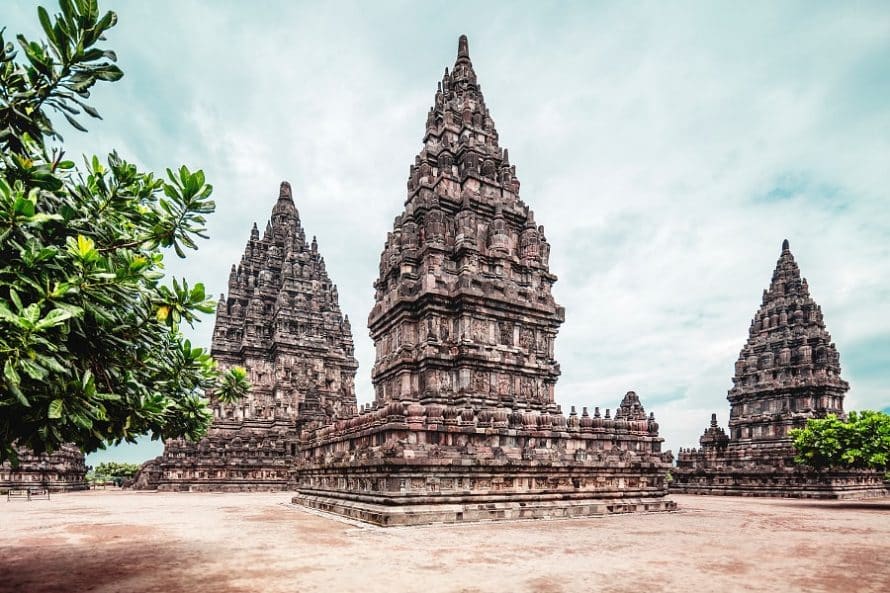
Location: Border of Yogyakarta and Central Java
Also known as: Roro Jonggrang Temple
Prambanan Temple is Indonesia’s largest Hindu temple complex and a UNESCO World Heritage Site. Constructed in the 9th century, this architectural marvel is dedicated to the Hindu Trinity—Brahma, Vishnu, and Shiva.
Features: 240+ temples including main shrines and vahana temples
Why visit: Detailed carvings, cultural performances, and Javanese heritage
Highlight: Ramayana ballet performance during full moon nights
Prambanan temple is the largest Hindu temple on the island of Indonesia in Yogyakarta between Central Java and Yogyakarta state. This 9th-century sanctum is among the UNESCO Heritages sites list, which honors Hindu Trinity Gods – Brahma, Vishnu, and Shiva.
Worldwide visitors visit this temple to see the magnificent classical architecture and arts of ancient Java Hinduism. The temple compound consists of 3 temples for three main Hindu deities, three vahana temples, 2 Apit temples, 4 Keller temples, 4 Patok temples, and 224 Pervara temples.
4. Uluwatu Temple – Cliffside Serenity and Kecak Dance
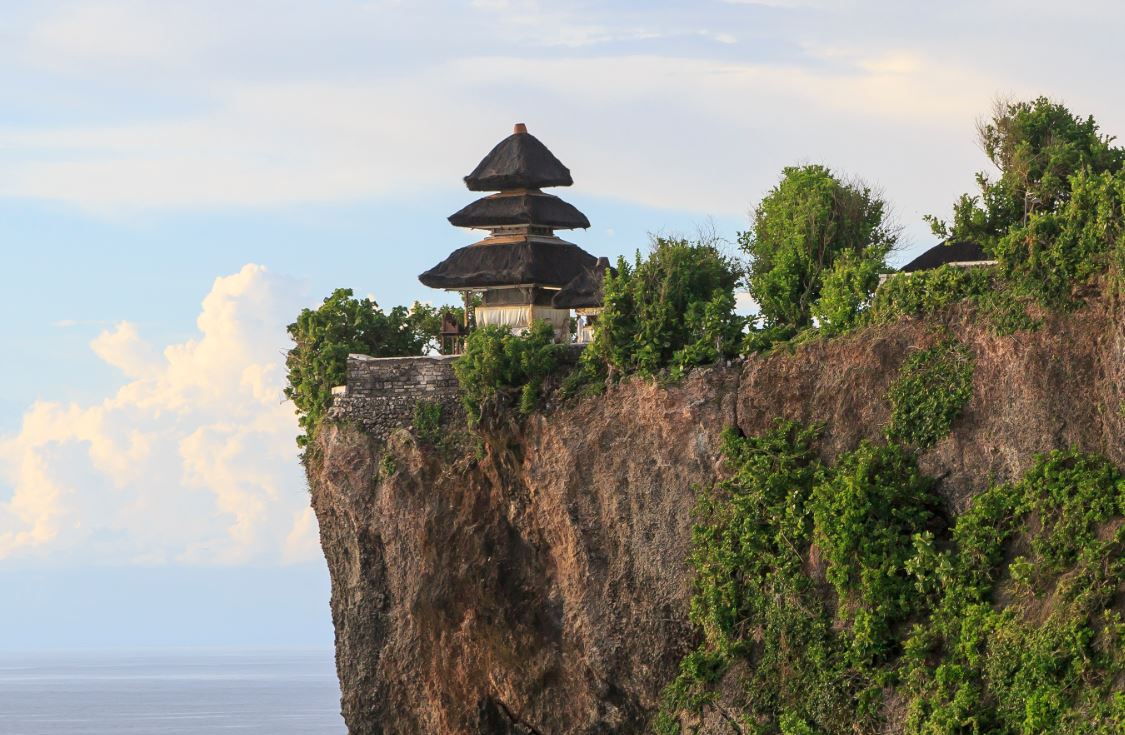
Location: Pecatu Village, South Kuta, Badung, Bali
Also known as: Pura Luhur Uluwatu
Perched on a dramatic cliff 70 meters above sea level, Uluwatu Temple is one of the best sunset temples in Bali. It is dedicated to Lord Rudra, a fierce form of Shiva.
Experience: Daily Kecak dance performances with the ocean as a backdrop
Why visit: Stunning ocean views, sacred ambiance, cultural experiences
Note: Watch out for monkeys known for playful thefts!
Pura Luhur Uluwatu is a Balinese Hindu temple built on the edge of a cliff above the sea at Uluwatu. This temple honors Lord Rudra (one of the forms of Lord Shiva) in the form of Sang Hyang Widhi Wasa.
Visitors must know monkeys who steal things when entering the temple’s area. Besides that, a Kecak dance performance foretells the story of the epic Ramayana at 6 pm. So, enjoying the traditional dance with a sunset in the background can be a memorable experience.
5. Pura Ulun Danu Batur – Temple of Harmony
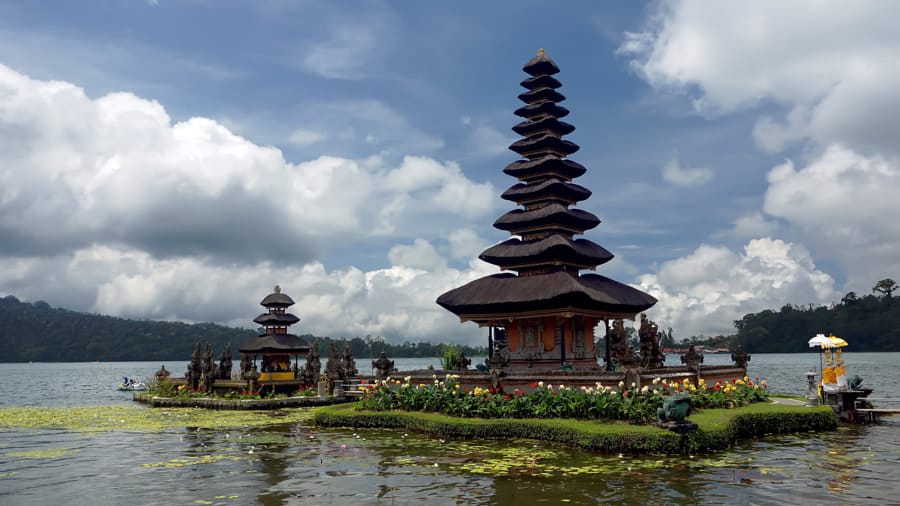
Location: Batur Village, Kintamani, Bali
Also known as: Temple of Lake Goddess Dewi Danu
This temple honors Dewi Danu, the Balinese goddess of lakes and rivers, along with Lord Vishnu. It is one of the most important Pura Kahyangan Jagat temples and reflects the balance between nature and spirituality.
Highlights: 9 temples, 285 shrines, and stunning volcano views
Festival to attend: Odalan, held during the 10th full moon of the Balinese calendar
Why visit: Learn about Balinese irrigation, farming, and religious practices
This Balinese Hindu temple is among the Pura Kahyangan Jagat. It locates in Batur village, on the feet of the active volcano Mt. Batur. It is one of the most important holy sites in Bali, which symbolizes harmony and balance of the entire Island of Indonesia. The temple is dedicated to Lord Vishnu and the domestic goddess of lakes and rivers, Dewi Danu.
Inside the temple compound, there are nine temples. Among them, Pura Ulun Danu Batur is the main one with five courtyards. Inside the courtyards are 11-layer Meru structures and three smaller Meru, each of which honors a specific person, gods, and mountain.
Every smaller temple represents some particular gods of Balinese Hinduism, reflecting some visuals of Balinese culture and traditions. Therefore, visiting the Pura Ulun Danu Batur temple can provide visitors to learn more about Balinese culture. In addition, on the 10th full moon of the year, the temple hosts Odalan – a major feast festival between late March and early April.
6. Sri Mariamman Temple – Dravidian Legacy in Medan
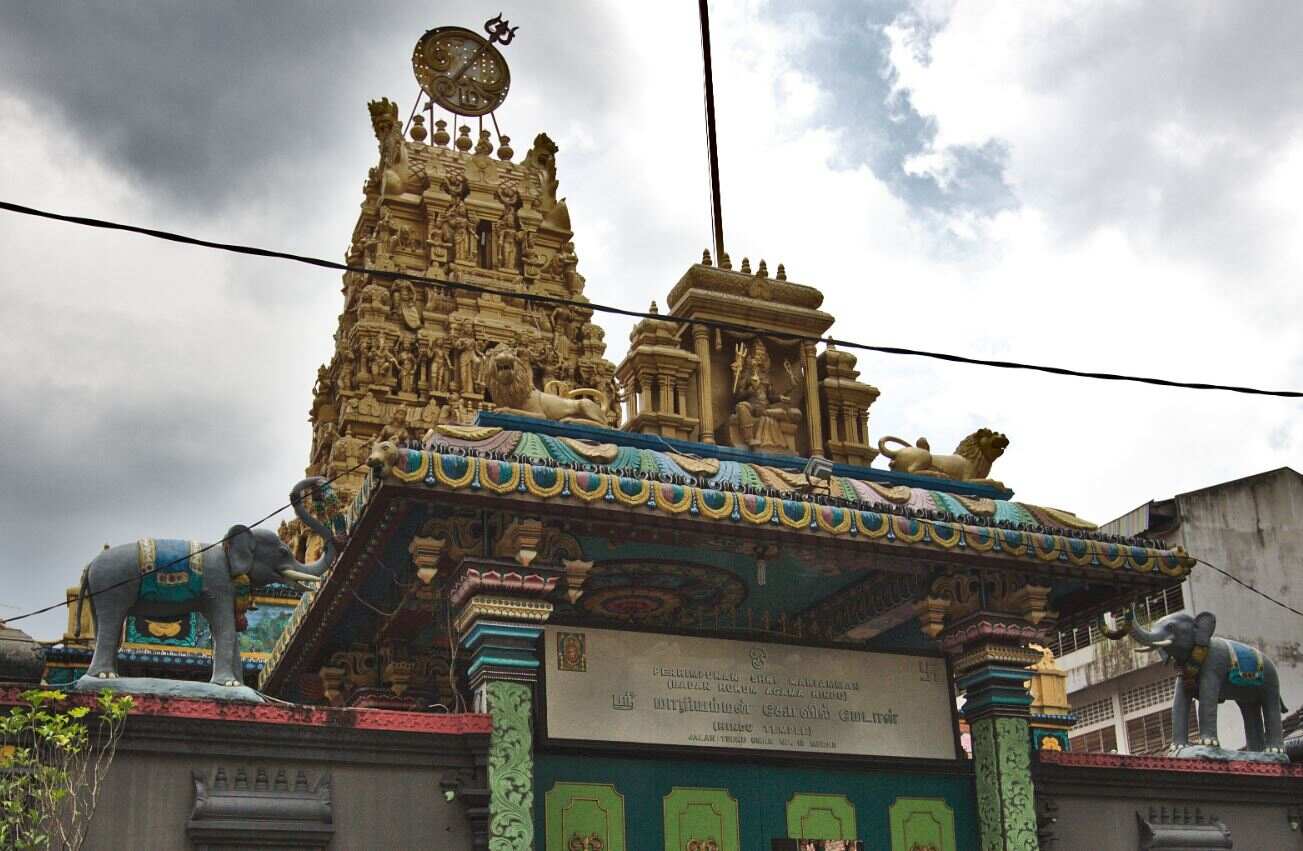
Location: Kampung Madras, Medan, North Sumatra
Built in 1884, this temple is the oldest Hindu temple in Medan, often called “Little India.” Dedicated to Goddess Mariamman, this temple also houses shrines to Lord Ganesha and Murugan.
Architecture: South Indian Dravidian style with colorful gopurams
Why visit: A glimpse of Tamil Hindu culture in Indonesia
Nearby: Explore Indian markets and South Indian vegetarian cuisine
It is the oldest Hindu temple in Medan, the capital city of the province of Sumatra. Built in 1884, this temple resides in the Kampung Madras – the small India of Indonesia.
The central deity of Sri Mariamman Temple is Goddess Mariamman, the Hindu deity of rain. Besides, Lord Ganesha and Murugan are also worshipped here. The temple follows the south Indian Hindu temple architectural design with an entrance gate decorated with gopura.
7. Goa Gajah – The Elephant Cave of Bali
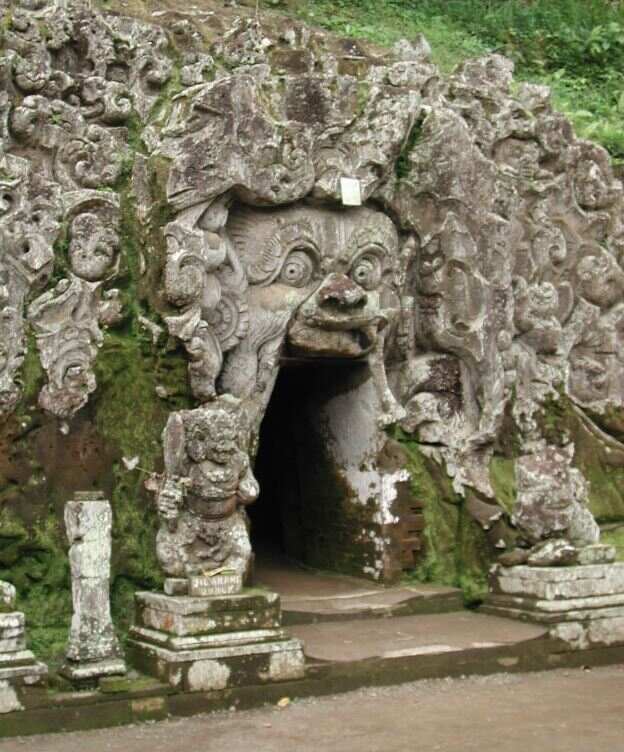
Location: Bedulu Village, near Ubud, Bali
Also known as: Elephant Cave Temple
A significant archaeological and spiritual site, Goa Gajah is believed to date back to the 9th century. The temple features a demonic mouth cave entrance, statues of Lord Ganesha, and a Shiva Lingam.
UNESCO History: Former World Heritage site
Why visit: Sacred bathing pools, meditative caves, and lush rice terraces
Nearby: Tegallalang rice fields and Ubud Art Market
This Elephant Cave temple was included in the UNESCO World Heritage in 1995 but was later removed in 2015. This 9th-century temple resides in Bedulu village, 6 km from Ubud, Bali, Indonesia.
Inside the temple compound, you can find a statue of Lord Ganesha at the left entrance and Shiva Lingam at the right entrance hall. This archeological Hindu sanctuary possesses artistic carved images and figures of Hindu gods.
Moreover, ancient bathing pools, enchanting green rice fields, and parks attract international and domestic tourists annually.
8. Candi Gedong Songo – Temple of Nine Shrines
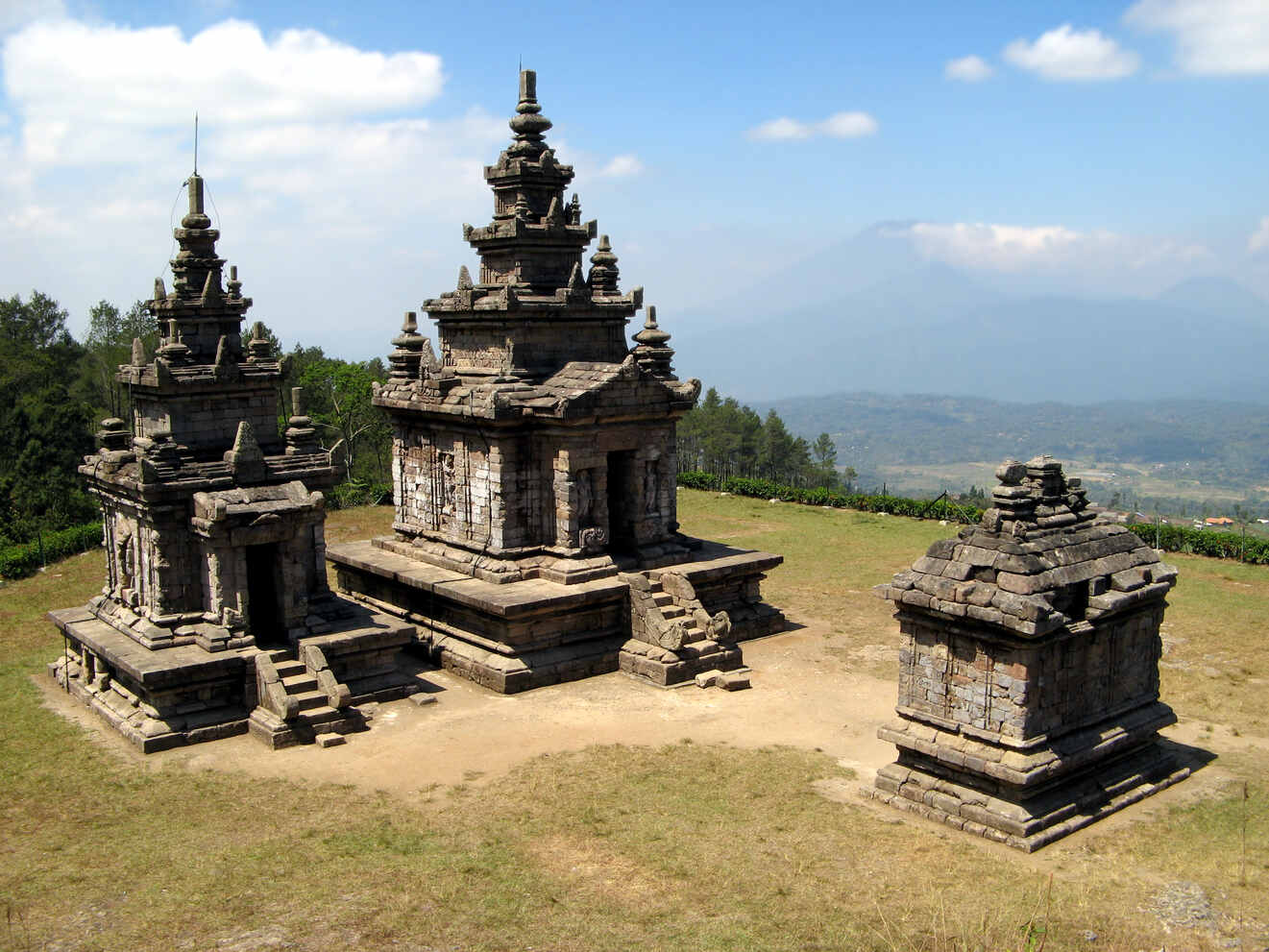
Location: Mount Ungaran, Semarang, Central Java
Built between the 8th and 9th centuries, Candi Gedong Songo means “Nine Temples.” These shrines are spread across a highland and dedicated to Lord Shiva and Goddess Parvati.
Elevation: ~1,200 meters above sea level
Why visit: Misty mountain trails, hot springs, and panoramic hill views
Pro tip: Explore the temple complex on horseback!
It is a Hindu complex comprising five temple groups, built on Mt. Ungaran around 1270 m above sea level. This temple dates back to the 8th or 9th century and resides at Semarang, Central Java, Indonesia. The nine temples inside the Candi Gedong Songo complex are dedicated to Lord Shiva and Goddess Parvati.
Besides enjoying the artistic temples, visitors can enjoy panoramic views of nearby hills and green forests. For horse lovers, one can hire a horse to explore the entire temple compound.
9. Pura Taman Kemuda Saraswati – Ubud’s Water Palace

Location: Ubud Town Center, Gianyar, Bali
Also known as: Saraswati Temple Ubud
Dedicated to Goddess Saraswati, the deity of knowledge and arts, this temple is one of Bali’s most aesthetic. Constructed in 1951, it features lotus-filled ponds, golden carvings, and traditional Balinese sculptures.
Cultural event: Kecak dance performances every Tuesday and Thursday
Why visit: Artistic ambiance, serene lotus pools, and literary spirit
Ideal for: Photographers, writers, and spiritual seekers
Also known as the Ubud water palace, this temple is dedicated to the Goddess Saraswati. Built in the year 1951, this temple resides in Ubud, Bali. To honor the goddess of wisdom, art, and speech, the prince of Ubud ordered the great sculptor and architect, I Gusti Nyoman Lempad, to design this masterpiece structure.
Visitors can enjoy grandeur water gardens, lotus pools, and ancient Balinese sculptures inside the temple compound. Tourists can also enjoy the Kecak dance every Tuesday and Thursday. So, plan your visit these days to learn and experience Balinese culture.
10. Pura Tanah Lot – Temple on the Sea
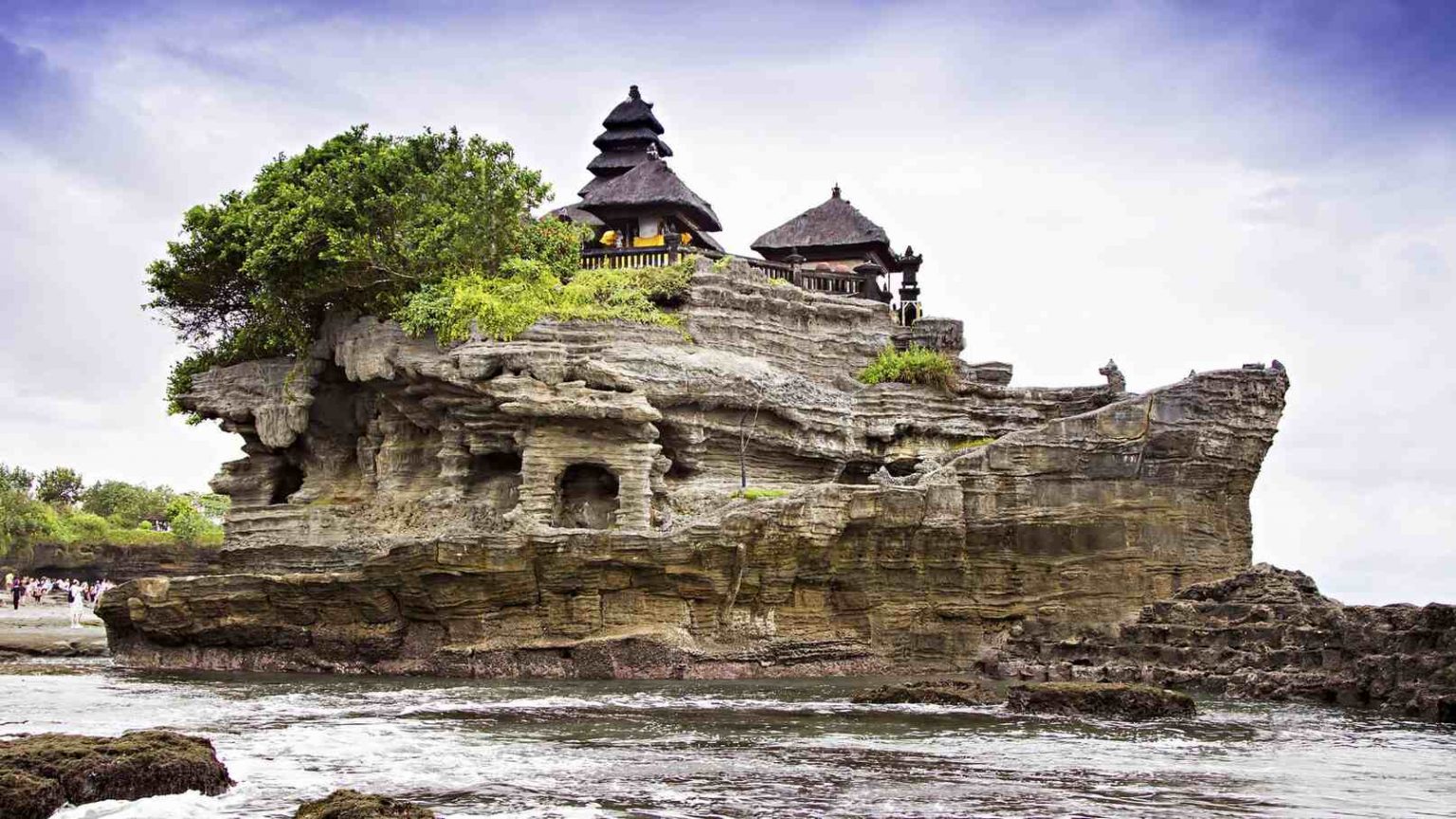
Location: Beraban Village, Tabanan, Bali
Tanah Lot means “Land in the Sea,” and this temple is one of the most iconic Hindu sea temples in Bali. Sitting atop a rock formation, it’s dedicated to Lord Varuna, the ocean deity.
Best time to visit: Sunset for golden seascape photography
Why visit: Oceanic spirituality, scenic views, and mythological significance
Nearby: Tanah Lot Market for souvenirs and Balinese handicrafts
One of the most romantic, picturesque, and natural on the island of Indonesia is Tanah Lot. In the Balinese language, Tanah lot means land on the sea, which completely suits a rock formation offshore. It is a resident of one of the seven sea temples dedicated to the Lord Varuna – the water deity.
Pura Tanah Lot temple resides above the rock, and its references can be found in Balinese mythology. Thus, due to its calming and scenic atmosphere, Tanah Lot is one of the must-visit places in Bali, Indonesia.
Final Thoughts: Why You Should Explore Hindu Temples in Indonesia in 2025
From ancient mountain shrines to sea-temples and cave sanctuaries, Indonesia offers a deeply immersive spiritual experience for lovers of Hindu culture, temple architecture, and Asian history. With 2025 promising a revival in cultural tourism, now is the best time to plan your trip and witness the divinity and legacy of Hinduism in Indonesia.
Frequently Asked Questions (FAQs)
Which is the most popular Hindu temple to visit in Indonesia in 2025?
Answer: The most popular Hindu temple to visit in Indonesia in 2025 is Candi Prambanan, located near Yogyakarta. It is the largest Hindu temple complex in Southeast Asia and is a UNESCO World Heritage Site. Known for its towering spires and intricate carvings, Prambanan attracts millions of tourists and spiritual seekers every year.
Are there Hindu temples in Bali that tourists can visit?
Answer: Yes, Bali is home to over 10,000 Hindu temples open to tourists. Popular ones include Pura Besakih, Tanah Lot, Uluwatu Temple, and Goa Gajah. These temples offer breathtaking views, spiritual energy, and cultural performances like the Kecak Dance.
What are the best Hindu temples to visit in Bali, Indonesia?
Answer: The best Hindu temples in Bali to visit in 2025 include:
- Pura Besakih – The Mother Temple
- Tanah Lot Temple – Sea temple on a rock formation
- Uluwatu Temple – Cliffside with ocean views
- Pura Ulun Danu Batur – Near Mount Batur
- Goa Gajah – The historic Elephant Cave temple
Each offers unique spiritual, historical, and scenic experiences.
Is Hinduism still practiced in Indonesia today?
Answer: Yes, Hinduism is actively practiced in Indonesia, especially in Bali, where over 80% of the population is Hindu. Smaller Hindu communities also exist in Java, Sumatra, and among the Indian diaspora in Medan. The religion influences daily life, festivals, temple rituals, and Balinese architecture.
Can foreigners visit and participate in Hindu temple rituals in Indonesia?
Answer: Yes, foreigners are welcome to visit and respectfully observe Hindu temple rituals in Indonesia. In popular temples like Besakih, Prambanan, and Tanah Lot, visitors can attend ceremonial festivals and traditional dances. Dress modestly and follow local customs, such as wearing a sarong.
What is the best time to visit Hindu temples in Bali and Indonesia?
Answer: The best time to visit Hindu temples in Indonesia is during the dry season from April to October, when the weather is ideal for sightseeing. Visiting during major festivals like Odalan, Galungan, or Nyepi offers deeper cultural and spiritual experiences.
What should I wear when visiting Hindu temples in Indonesia?
Answer: Visitors should wear modest clothing. A sarong and sash are often required, and most major temples provide them at the entrance. Shoulders and knees should be covered, and shoes must be removed before entering the inner sanctums.
Are there UNESCO-listed Hindu temples in Indonesia?
Answer: Yes, Candi Prambanan is the most famous UNESCO World Heritage Hindu temple in Indonesia, recognized for its 9th-century architecture and dedication to the Hindu Trinity – Brahma, Vishnu, and Shiva. It’s a must-visit for both pilgrims and tourists.
What is the significance of Tanah Lot Temple in Bali?
Answer: Tanah Lot Temple is one of the most iconic and photographed Hindu temples in Bali. It sits on a sea rock formation and is dedicated to Lord Varuna, the god of the ocean. The temple is known for its sunset views, spiritual atmosphere, and cultural importance in Balinese mythology.
How many Hindu temples are there in Bali, Indonesia?
Answer: Bali is often called the Island of a Thousand Temples, but it actually houses over 10,000 Hindu temples, ranging from large public temples like Pura Besakih to smaller family shrines found in every Balinese home.
Pro Tip: To get the best temple experience in Indonesia, plan your visits early in the morning and try to coincide with major Hindu festivals for a deeper cultural immersion.



